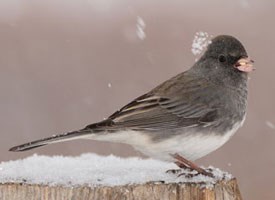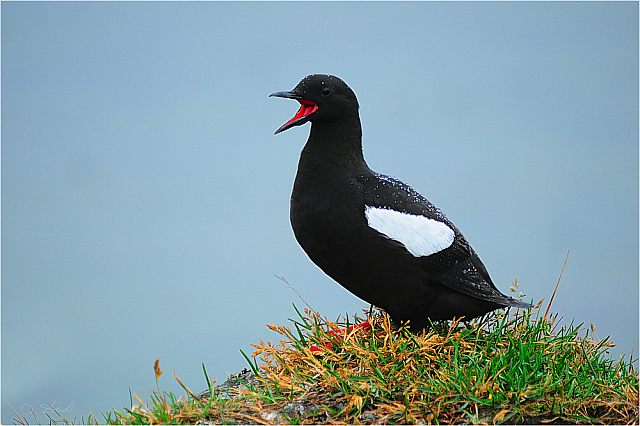For the three days up until yesterday, I saw these awesome fliers over the pond/lake I hadn't noticed for the last two years. They were fully black water birds, except for offwhite white wing patches which made their flight such a remarkable thing to see; they had black beaks similar in shape to loons, but the kicker was the hot, bright, demonic-looking legs, and I mean to tell you they were red. I thought, "there are six of these cutie pies, and while we might get mixed up about white and black markings, the red legs and an occasional red patch around the mouth must mean something." So I dutifully plugged my observations into Bing! and dozens of birds, totally unrelated to what bird I was seeing, so I looked up at what I had loaded, and failed to put the red legs bit in. When I did that, the same name kept coming up, "Black Guillimot." So I clicked on a few of them, but noticed the wing patches were a pure, glistening white, whereas the birds I saw had offwhite wing patches, but were in every other way identical, especially their beautiful heads and beaks. They look like thoroughbreds, except they're birds. Today, when I went into images for
Cepphys grylle, Latin name for the Black guillimot, sure enough, I found some dead ringers for the little tribe that visited my lake for 2 1/2 days. I don't know if I will get to sight them again for a few months, because for some reason unbeknownst to me, they are not frequent visitors to Walker County Texas, but one of the sources said some of them winter feed as shorebirds in the south before heading up to Canada's St. Lawrence River basin area, Maine, and the northern Adirondacks. Also, it said they breed inland, not at the shore, which may be one reason they visited our lake in spite of a perpetual Great Blue Heron loner and an annual family of Great Egrets who quibble with him over who has pecking rights on whatever it is at the bottom of the shallows of our lake they find is cuisine. I know I may never have the privilege of seeing any more, and I don't know why they're headed north at this post-spring flight, but the last time I saw them, they flew north, so I'm pretty sure they graced me with their fabulous vision of flight for 3 short days, and oh, how I totally loved seeing them.
Isn't he stunning! Oh, wait, I can only describe how stunning his vision was as several of them were flying over the lake. They are amazing fliers, dazzling would be the word I was trying to come up with. They're absolutely dazzling. Oh, yes, and the reason I saw the confusing red around the beak area infrequently? Well, here's a visual on that reason:






